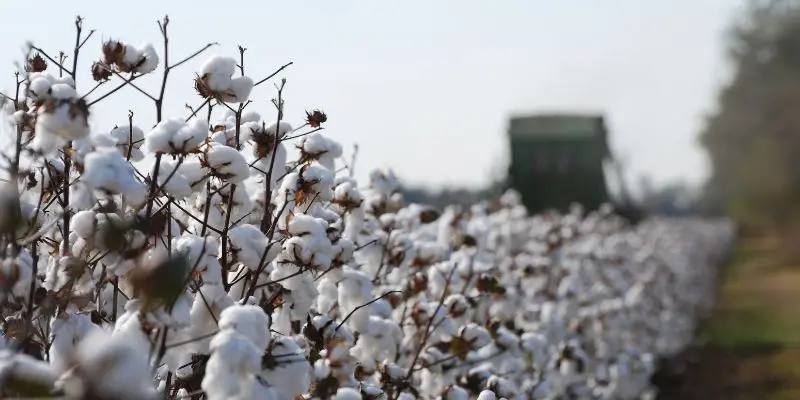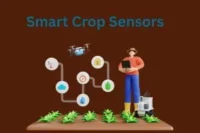How to Grow Cotton in Open Fields: A Practical Guide to Cultivating White Gold Naturally
Published: 7 May 2025

Cotton (Gossypium spp.) is one of the most widely cultivated fiber crops in the world, valued for its soft, breathable fibers and versatile uses in textiles, oil, and animal feed. It thrives in warm climates with long frost-free periods, typically requiring 150–180 days to reach maturity. When grown in open fields, cotton needs full sun, well-drained soil, and consistent care from planting to harvest. With the right conditions, even small-scale growers can produce high-quality cotton naturally and sustainably.
So, guys, without wasting time, let’s jump into the article to learn How to Grow Cotton in Open Fields: A Practical Guide to Cultivating White Gold Naturally
The Legacy and Promise of Cotton
- Cotton has shaped cultures, clothed nations, and built economies—yet it all starts with a humble seed in the soil.
- Growing cotton in open fields connects you to a powerful tradition of resilience and renewal.
- This guide shows you how to raise healthy cotton plants—from seed to soft, white harvest—naturally and confidently.
2. Know the Cotton Plant: What You’re Growing
- Cotton (Gossypium spp.) is a warm-season crop with a growing cycle of 5–6 months.
- It produces soft, fibrous bolls used in textiles, and its seeds are used for oil and feed.
- Requires patience, care, and a warm, frost-free growing season.
3. Choosing the Right Variety
- Upland Cotton (G. hirsutum): Most common; ideal for beginners.
- Egyptian and Pima Cotton: Higher quality fiber, more demanding.
- Choose based on climate, soil, and intended use.
4. When and Where to Plant Cotton
- Plant in late spring, when soil temp is consistently above 60°F (16°C).
- Requires full sun (6–8 hours daily) and 150–180 frost-free days.
- Ideal for southern climates or areas with long, warm summers.
5. Preparing the Soil for Success
- Cotton needs well-draining, fertile soil with a pH of 5.8–8.0.
- Till deeply and add compost or aged manure before planting.
- Avoid compacted or waterlogged areas.
6. How to Plant Cotton Seeds
- Space seeds 3–4 inches apart in rows 30–40 inches apart.
- Plant 1–1.5 inches deep in warm, moist soil.
- Thin seedlings to 8–12 inches apart once established.
7. Watering and Fertilizing Tips
- Water consistently but avoid overwatering—cotton prefers dry periods between watering.
- Needs 20–30 inches of water per season (including rainfall).
- Apply nitrogen-rich fertilizer early; reduce later to avoid excess foliage.
8. Natural Pest and Weed Management
- Common pests: bollworms, aphids, and cutworms.
- Use crop rotation, neem oil, and companion planting for organic control.
- Keep rows weed-free early on; use mulch to suppress regrowth.
9. Cotton Flowering and Boll Development
- Cotton blooms with creamy flowers that turn pink, then drop to form bolls.
- Bolls mature over 50–80 days, drying and splitting open to reveal fiber.
- Monitor closely—timing is everything.
10. Harvesting Cotton by Hand or Machine
- Harvest when bolls are fully open and dry—usually 150–180 days after planting.
- Hand-picking ensures cleaner fiber, especially for small-scale growers.
- Wear gloves to avoid irritation from dried boll husks.

11. Drying and Storing Cotton Properly
- Let harvested cotton dry in a warm, shaded place to avoid mold.
- Remove seeds manually or with a hand gin if available.
- Store in breathable sacks in a dry, rodent-free area.
12. Uses of Homegrown Cotton
- Spin your own yarn, use as natural stuffing, or simply enjoy as a natural fiber.
- Seeds can be pressed for oil or used in animal feed (with caution).
- Celebrate your harvest—it’s a rare and rewarding achievement.
13. Challenges and Lessons from the Field
- Cotton requires time, attention, and seasonal planning—but it teaches patience and care.
- Weather, pests, and weeds may challenge you, but the reward is real and deeply personal.
- Growing cotton reminds us where our everyday essentials truly begin.
Conclusion
- Growing cotton in open fields is a meaningful journey that reconnects you with the earth, the seasons, and your own hands.
- With care and intention, you can transform a small patch of land into a source of natural fiber, beauty, and pride.
- This is more than farming—it’s growing something historic, healing, and human.
References
This guide is informed by research from agricultural extension services and cotton-growing manuals provided by institutions like the USDA and regional universities.
Author Name.
Mhamad Hesam Shahrajabian
Considering White Gold, Cotton, for its Fiber, Seed Oil, Traditional and Modern Health Benefits
Journal Article

- Be Respectful
- Stay Relevant
- Stay Positive
- True Feedback
- Encourage Discussion
- Avoid Spamming
- No Fake News
- Don't Copy-Paste
- No Personal Attacks

- Be Respectful
- Stay Relevant
- Stay Positive
- True Feedback
- Encourage Discussion
- Avoid Spamming
- No Fake News
- Don't Copy-Paste
- No Personal Attacks





